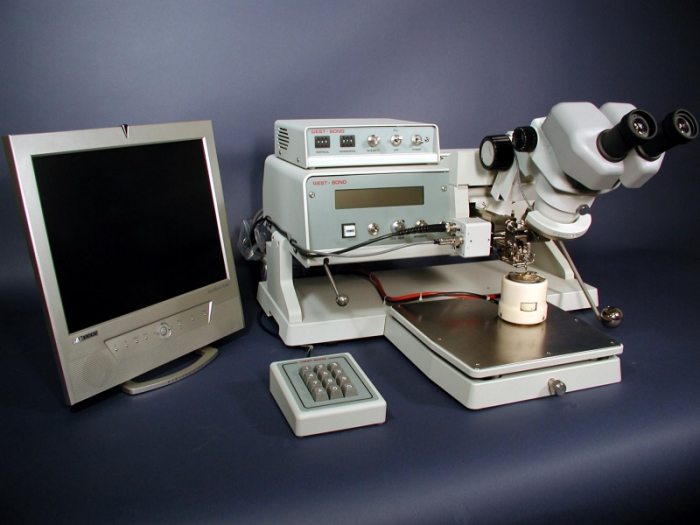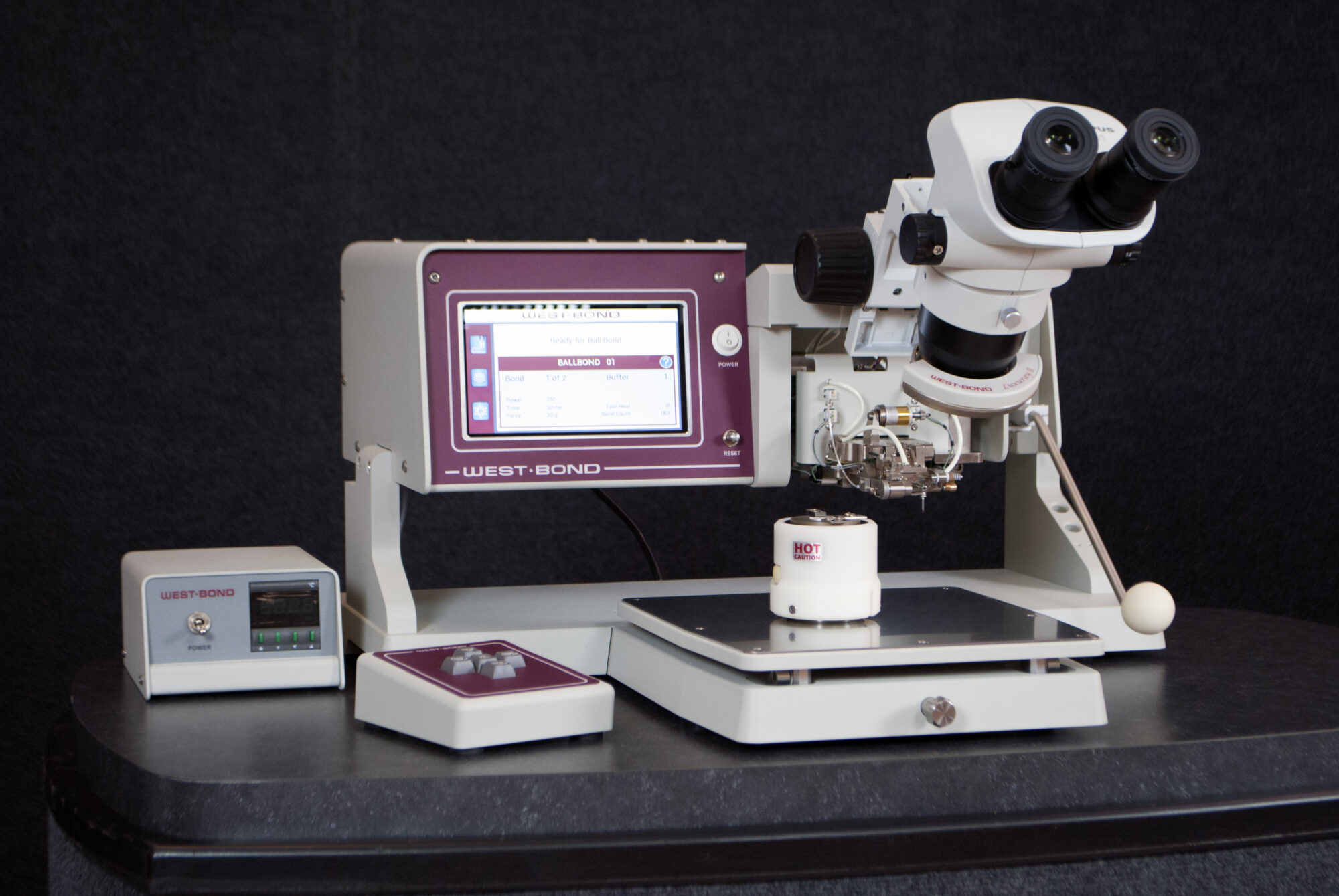Semi-Automatic Bonders – 4KE Series
AUTOMATIC PRECISION at a fraction of the cost. Microprocessor controlled motor drives for both Y and Z-axes bond a succession of parallel, single or multiple arched wires maintaining identical loop and bond shapes. Unlimited deep-reach access to bond targets on IC packages of any X-Y dimension with West•Bond’s throatless chassis and micromanipulator designs. Ideal for bonding high power, high frequency devices where identical bond and loop shapes are critical.
CONVERTIBILITY for angled and vertical wire feed wedge bonding is easily accomplished with a simple change of clamping mechanisms, both of which are included with Model 4546E. Model 4546E expands convertibility with a 45° tool head and 90° tool head. All program variables and bond settings for each configuration are retained in memory between conversions.

Manual Die Bonders
7372E · 7367E · 7374E Series
The significant advantages of the E-Series – gantry construction to allow unlimited work piece size, orthogonal motions rather than pivoted, individual axis brakes – are brought to West·Bond’s line of Dual-Head Die Bonders by this completely new design. All of the B-Series models were included in the change-over, and all of their features preserved in their E-Series replacements. ESD protection is included as an added bonus.
Dual-Head Die Bonders use the heads alternately to pick up chips; then rotate, place, and bond them. Both pick-up and bonding can be done by different methods, changeable by detachable heads. The machine action to exchange heads
places each one in view at the same use position, and by
motions that are now also orthogonal rather than pivoted.
Embodied in this series is a new three-axis micromanipulator which allows all the machine mechanism to be arrayed above the work plane, so that there is now no limit to the size of a work piece. Each of the X, Y, and Z axes is straight-line and purely orthogonal, and each can be braked pneumatically on signal. Dual counterweights balance the pantograph arm and the tool support individually. The standard manipulator control arm locates the control point at table elevation; an alternate control arm and wrist-rest are available for use with very large work pieces to move the control point above the work plane.



